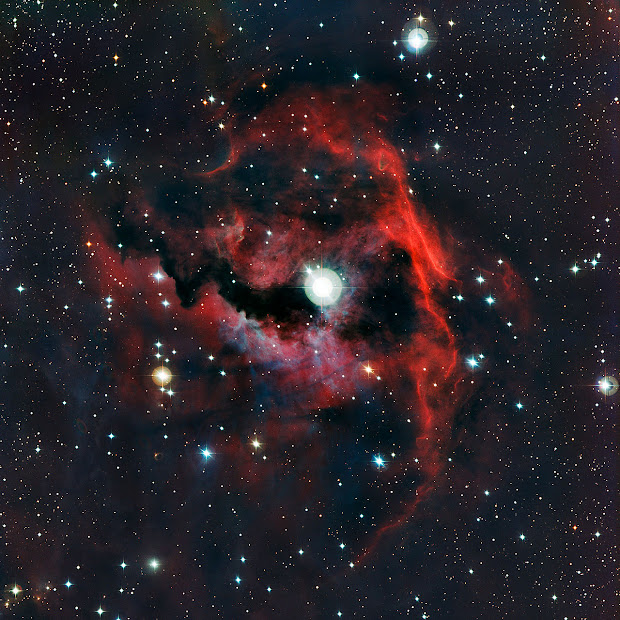Click on the image for full resolution (15.6 MB)
This image from ESO's La Silla Observatory shows part of a stellar nursery nicknamed the Seagull Nebula. This cloud of gas, known as Sh 2-292, RCW 2 and Gum 1, seems to form the head of the seagull and glows brightly due to the energetic radiation from a very hot young star lurking at its heart. The detailed view was produced by the Wide Field Imager on the MPG/ESO 2.2-meter telescope. The Seagull Nebula lies just on the border between the constellations of Monoceros (The Unicorn) and Canis Major (The Great Dog) and is close to Sirius, the brightest star in the night sky. The nebula lies more than four hundred times further away than the famous star. The complex of gas and dust that forms the head of the seagull glows brightly in the sky due to the strong ultraviolet radiation coming mostly from one brilliant young star - HD 53367 - that can be spotted in the centre of the image and could be taken to be the seagull's eye. The radiation from the young stars causes the surrounding hydrogen gas to glow with a rich red colour and become an HII region. Light from the hot blue-white stars is also scattered off the tiny dust particles in the nebula to create a contrasting blue haze in some parts of the picture. Although a small bright clump in the Seagull Nebula complex was observed for the first time by the German-British astronomer Sir William Herschel back in 1785, the part shown here had to await photographic discovery about a century later. By chance this nebula lies close in the sky to the Thor's Helmet Nebula (NGC 2359), which was the winner of ESO's recent Choose what the VLT Observes contest (ann12060). This nebula, with its distinctive shape and unusual name, was picked as the first ever object selected by members of the public to be observed by ESO's Very Large Telescope. These observations are going to be part of the celebrations on the day of ESO's 50th anniversary, 5 October 2012. The observations will be streamed live from the VLT on Paranal.
The full resolution image weighs 15.6 MB, so please be patient when downloading!
Credit: ESO
Image enhancement: Jean-Baptiste Faure










0 comment(s):
Post a Comment